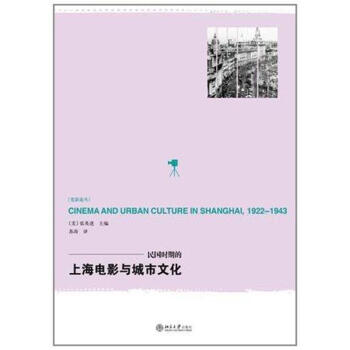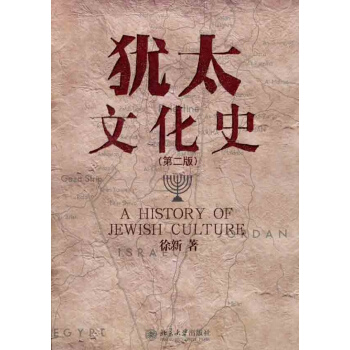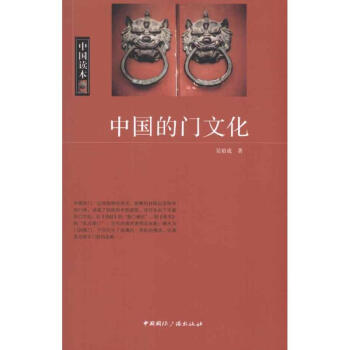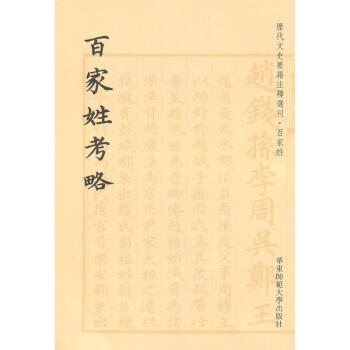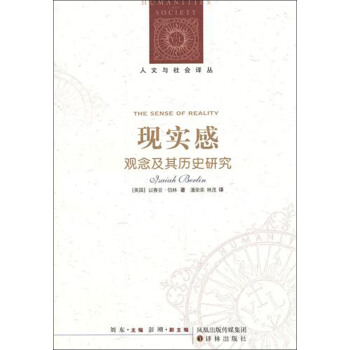![中华人文(2018第一辑) [Chinese Arts and Letters]](https://pic.tinynews.org/12386896/5b28cee6N6df3324a.jpg)

具体描述
编辑推荐
《中华人文(2018第1辑)》是一本译介中国当代作家作品兼顾中国当代艺术的全英文图书。本书以兼容并蓄的精神择选稿件,旨在向英语世界译介中华人文,特别是中国当代文学创作的优秀成果,弘扬中华人文精神,促进中华文化交流。
内容简介
本辑主推作家是叶弥,共收录了叶弥的三篇短篇小说《明月寺》《雪花禅》和《香炉山》》、一篇访谈和一篇评论。本辑新增栏目“经典回声”,介绍了老子(包括《道德经》的部分翻译和一篇与此相关的文章。
作者简介
主编
杨昊成
江苏宜兴人,1963年生。博士,教授,江苏省外国文学学会会员,江苏省外国语言学会会员,南京市翻译家协会会员,南京师范大学外国语学院美国文明研究所所长,全英文期刊Chinese Arts and Letters(《中华人文》)主编。
目录
Editor’s Note
by Yang Haocheng (杨昊成)
Featured Author: Ye Mi (叶弥)
Bright Moon Temple (《明月寺》)
Snowflake Meditation (《雪花禅》)
Mount Xianglu (《香炉山》)
Critique
The Enlightened Way of Fiction by Zhang Xuexin (张学昕)
Interview
An Interview with Ye Mi by Jin Ying (金莹)
Culture & Heritage
The Essentials of Chinese Calligraphy by Yang Haocheng (杨昊成)
Echoes of Classics
Introduction to Laozi and His Daodejing by Bill Porter
Selections from Daodejing
Short Stories
Wealth, Blessings and Longevity (《福禄寿》) by Pang Yu
(庞羽)
Prose
Bluestone Alleys (《青石小街》) by Fei Zhenzhong (费振钟)
Rain in the Old Village (《古村的雨》) by Fei Zhenzhong
(费振钟)
Poems
Poems by Hu Xian (胡弦)
Art
Coffee Pot or Water Jug? by Shen Li (沈黎)
精彩书摘
Bright Moon Temple
Ye Mi /叶 弥
Translated by Ella Schwalb
In springtime, when the sunshine was goading all kinds of flowers to struggle into bloom, I slung my backpack over my shoulder and left home. I wanted to go see
the blossoms. The season was sure to lose its pristine sparkle in two weeks’ time—many flowers would start to wilt on their branches, and petals would fall to the dust in droves. So I wanted to take it all in before the spring turned dull and dirty, to see how the flowers blossomed. Once this moment passed, would there be anything left blooming for me to see?
My aim was simple. I squinted in the sun as it shone down on my face, and then I leisurely set out, heading south.
I got to some mountains after a while. Peach blossoms stretched as far as the eye could see, and the earth and sky were all flooded with sun as the sweet wind drifted by above the flowering trees. In the soft, warm chuckle of that all-pervasive
sunshine, I ceased to exist, my steps light and buoyant as though I were the sun’s own two feet.
I was walking along when someone behind me said,“Hey there, where are you headed?”
I turned around and saw a swarthy old villager with a stick-straight back walking behind me.
“I’m taking a springtime walk,” I said.
I hung back a bit, and the old man caught up to me.
“You’ve come from the city,” he concluded confidently. Then he continued, as though talking to himself, “I’m just coming back from the city myself. I went yesterday on a transport ship that belongs to a relative, so I got a free ride. I started back first thing this morning, and caught a little town bus, but they wanted to charge me twelve yuan. I got mad, and got off halfway without paying them even one cent. That’s how I managed to save twelve yuan on my way there, and then six more on my way back.”
I laughed to myself. He peered at my face, then said earnestly, “Nobody comes by these parts, as there are no touristic sites here. It has been an obscure locale from time immemorial.” I couldn’t help but let out a great belly laugh when I heard the old man putting on airs like this. But he didn’t pay me any mind, and just went on talking, “Erlang Mountain is the only good thing to see. Bright Moon Temple is up there, and there are lots of flowering plants and bamboo. There are pheasants too, and to the south and east of the mountain there’s a lake with wild ducks in it. People say that if the pheasants mate with the ducks, they make a phoenix... yes, this mountain is well worth seeing, so you might as well go up and take a look around. You can stay in the temple for twenty yuan a night, three meals included. The only people up there are the couple who run the temple. They used to be regular folk—from the city, like you. They came in the spring of 1970, but nobody knows why. It’s been almost thirty years now, and they’ve never had any family come to visit... The man is named Master Luo, and the woman Master Bo, and even though they run the temple, they still dress like commoners and live together as husband and wife, sleeping in the same room and everything. Isn’t that strange?”
前言/序言
To be frank, I started reading Ye Mi (叶弥) only a little over three years ago when she was recommended to me by both Su Tong (苏童) and Fan Xiaoqing (范小青), who said that she was a writer of real narrative power with a unique style of her own. The first story I read of hers and then published in CAL is“Family,” one that is vastly different from others in that it smacks of a strong flavor of the ambiance prevalent in the writings of the Republican period of China. Her mind seems to me to be totally engrossed in a serene world far away from the madding crowd of today. Mountains and flowers, temples and monasteries, the bright moon and a sprinkling of lonely, leisurely souls—all these seem to have made up the entire world of her literary landscape. She is instinctively attached to these things and people and seems to have little interest in what is going on in this world of mundane existence. I’ve always been wondering what could possibly be the reason behind this literary preference of hers. Then I was reminded of her retreat from the city to the countryside a few years ago, where she preferred a self-contained, rustic life with her patches of vegetables and fruit trees and flocks of fowls and pets. Ye Mi is my age and not that old to retire to the country like China’s reputed recluses of the olden days when they had either suffered enough setbacks in the realistic world, or when they were tired of the schemes and struggles of the outside world and dreamed of withdrawing to the mountains and waters for an unperturbed life. Ye Mi seems to fit into neither category. But then who knows! What I do know is that the female author is very happy with what she has and what she is. She is at present the proud master of her own house at the side of the Taihu Lake, now working in the fields, now walking with her cherished pets, but most of the time peacefully working away at her letters.
Starting this issue, CAL has a new column added to it:“Echoes of Classics.” We’ll pick and choose those cultural and literary gems throughout the history of Chinese civilization from Laozi’s Daodejing, Confucius’ Analects, the pre-Qin prose, the works of the Pléiade of the Bamboo Grove, Tang and Song poetry, Yuan drama, Ming and Qing fiction, all the way down to the May 4th literary masterpieces. For Daodejing, which is the first on our long list and is known to have been the most translated Chinese classic with one hundred versions or so in English alone, we hesitated a lot as to which of these renditions to choose. James Legge? Frederic Henry Balfour? Witter Bynner? Arthur Waley? Lin Yutang (林语堂)? Or D.C. Lau (刘殿爵)? All towering figures in sinology or literary translation, but finally we came down to Bill Porter, a.k.a. Red Pine, a name with some Zen implication in it which Porter adopted for himself after more than a dozen years of life and work in Taiwan and Hong Kong. His rendition of Daodejing, using simple enough English to capture the austere and sometimes elusive meaning of the original text, impresses me as having the advantage of better fluidity in reading and easier accessibility to the modern reader. What is more noteworthy is his eclectic selection from the ocean of literary commentaries and exegeses on Daodejing throughout Chinese literary history which is yet another sure evidence of Porter’s extensive reading and rigorous scholarship. Dadejing, like The Analects, with its colloquial style, is relatively a simple text, but translating it is by no means easy. That’s why the Canadian sinologist W.A.C.H. Dobson, whose translation of Mencius won him world-wide accolade, said that it was time for a sinologist to retire when he announced that he was working on a new version of Daodejing. We don’t know exactly what is behind Dobson’s words, but we are moved by Porter’s courage to take up the challenge of translating this Daoist classic at an age when most people would prefer a cozy, retired life with their family and yet he decided to follow the dictates of his heart and set his mind on burning the long, solitary midnight oil.
One of the problems prior to translating Daodejing is that the translator will come across different versions of the text, including different punctuations, for throughout the ages, the text of Daodijing underwent numerous recensions and each would claim itself to be authentic. This alone will result in different enough interpretations and accordingly, divergent renditions. I take this to be quite normal with most ancient texts. Porter claims to have compared several dozen
versions of the original and we respect his final choice of the version to base his translation on.
The whole text of Daodejing, which is made up of the Scriptures of Dao (Way) and the Scriptures of De (Virture), has 81 chapters in all and approximately 5,400 words. It is impossible
to have the entire text and its English equivalent printed here in CAL. Besides, some sayings are more or less redundant semantically. We’ve picked those most well-known sayings, 16 chapters in all, for our readers. For those who care to do further comparative research on the classic, we’ve put the original Chinese alongside its English translation. And to make the Chinese look more like a bona fide original text, we’ve arranged it in the traditional rather than the simplified script and on a vertical setting of types. This arrangement will remain unchanged with all the other Chinese texts in“Echoes of Classics” that are to follow. Porter’s illuminating Introduction to Laozi, Daodejing and his translation of the work in Mercury House in 1996 is also printed here for those who might be first readers of this Daoist classic.
And a bit of change to one of CAL’s regular columns“Articles.” Renamed “Culture and Heritage,” this column, self-evidently more revealing by the sheer name of it, will include anything written, or translated, about Chinese culture at large, regardless of genre, style, time period, or subject matter. “The Essentials of Chinese Calligraphy,” my piece based on my two Dartmouth lectures during my one-year stint as a post-doc at Harvard twelve years ago, is printed here for the scrutinizing eye of both the professionals and common lovers of Chinese calligraphy. Comprised of three parts, viz., Evolution, Aesthetic, and Technique, the article is meant not as a pure academic research into one of the most abstract forms of traditional Chinese art, but as a primary on a brief history of calligraphy, on how calligraphy is usually appreciated, and how calligraphy is normally practiced. Each and every word is spoken from my thirty-odd years of experience of daily practice and I hope I’m not blowing my own trumpet.
The short story in this issue is Pang Yu’ (庞羽) “Wealth, lessings and Longevity.” As a young writer of the post-90s generation, Pang is a rising star in contemporary Chinese literary arena, and her style is easily recognizable for its raciness and saltatory way of thinking and word manipulation. Not easy to translate though, and that’s why we’ve asked Denis Mair, one of our most adept and exact translators, to do the job, and even he acknowledged to have to “wrestle with the picturesqueness of the language” in order to best preserve its“folksy charm.”
One needs a pair of poetic eyes to see the extraordinary through the ordinary, and that’s the case with Hu Xian (胡弦), the featured poet of this issue of CAL. There really is nothing remarkably stunning about the things he writes about, pebbles, trees, clouds, roads, spiders, circus troupes, fish on a chopping board, etc., but our poet has unusually keen antennae for the nature of these insignificant things or their facets easily ignored by us commoners. Even the decadent is transformed into the magical, as “Insects in Amber” well manifests, and that’s what poetry is all about, I guess.
After a whole three years of reticence, Shen Li (沈黎) resurfaces with her short piece on Lin Fengmian (林风眠), one of the most successful Sinicizers of western painting tradition of 20th century China. Lin was a very lonely man throughout most of his career; he was active in the artistic circles only in his early and later life, but other than that, he was rejected and marginalized, even maltreated in his prime years largely due to the ignorance of his contemporaries. Paradoxically, however, the misfortune turned out to be an actual blessing. Pushed to the limbo, away from all the hustle and bustle in the mainstream, Lin was able to settle down to the ontological study and practice of painting. And faced with seemingly endless days and months to kill, he produced one after another the most dazzling works of art ranging from fishing villages, birds and trees, old-day maids to Peking opera figures, female nudes and still life of all kinds. Not until his octogenarian years though did he enjoy a triumphant comeback and a universal recognition as one of the few genuine masters of 20th century Chinese art history.
...
用户评价
单凭书名,我能感受到它传递出一种沉静而厚重的学术气息,仿佛是一本值得反复品读的工具书,但又带着一丝艺术的芬芳。我大胆猜测,这本书的内容极有可能涉及到对中国传统艺术形式的深入剖析,比如中国画的笔墨韵味,书法作品的结构美学,甚至包括戏曲表演的程式化魅力。我期待它能提供一些关于艺术理论的严谨论述,帮助我理解不同艺术门类背后的哲学思想和美学追求。同时,我也希望它能穿插一些生动的案例,通过对具体作品的解读,让这些抽象的理论变得更加鲜活易懂。这本书或许能够帮助我提升对中国传统艺术的鉴赏能力,让我不再是囫囵吞枣地观看,而是能够真正地体会到其中蕴含的东方智慧和独特的神韵。
评分这本书的书名,尤其是“人文”二字,让我联想到很多与人类生活、情感、思想息息相关的内容。我猜测,它可能不会仅仅停留在学术的层面,而会更加注重人文精神的探讨。或许,书中会有一些关于古代文人心境的描摹,对他们生活方式的还原,以及他们如何在那个时代寻求精神的慰藉和价值的实现。我期待它能触及一些更深层次的关于“人”的思考,比如古人如何看待生死,如何处理人际关系,如何在困境中保持内心的平静与高洁。我更希望,这本书能够将这些古老的智慧与我们当下的生活连接起来,让我们从中汲取养分,从而更好地理解我们自己,以及我们所处的世界。它可能是一面镜子,照见我们内心深处的渴望,也可能是一盏明灯,指引我们前行的方向。
评分这本书的封面设计就深深吸引了我,一种古朴而又充满生命力的视觉语言扑面而来,让人立刻感受到背后蕴含的深厚文化底蕴。翻开扉页,那一串熟悉的中文和英文书名,瞬间拉近了与读者的距离。虽然我还没有真正深入阅读内容,但仅仅是这份沉甸甸的质感,以及其中透露出的丁寧与严谨,就足以让我对它充满期待。我猜想,这本《中华人文》一定如同一个精心打磨的玉器,每一页都凝聚着匠心,每一次翻动都能触碰到历史的温度。它或许不像市面上一些浮光掠影的文化读物,更像是一坛陈年的老酒,需要时间去品味,去体会其中的甘醇与回味。我尤其好奇,它会以何种角度去解读“人文”这两个字,是着重于艺术的传承,还是思想的演变?又或是两者兼而有之,形成一种独特的视角?我想,这一定是一次对中华文明深度探索的邀请,而我,正迫不及待地想要踏入其中,去感受那跨越时空的智慧与魅力。
评分说实话,我一直对那些过于宏大叙事的历史书感到有些畏惧,总觉得它们太过于冰冷和疏远,难以引起共鸣。但《中华人文(2018第一辑)》的名字,却给我一种截然不同的感觉。它没有摆出高高在上的姿态,反而更像是一位温和的叙述者,轻声细语地讲述着那些与我们息息相关的故事。我设想,它也许会从一些具体的文化符号入手,比如一件古代的瓷器,一幅流传千古的书法,或者是一段鲜为人知的民间传说,然后层层剥开,揭示其背后所承载的时代精神和民族情感。我期待它能提供一些新鲜的解读,让我们能够以一种更加亲切、更加人性化的方式去理解我们的传统文化,而不是仅仅停留在历史课本上的那些枯燥的年代和事件。我想,这本书或许能帮助我重新发现那些被遗忘的美好,让我在忙碌的生活中,也能找到一份属于自己的文化归属感和精神寄托。
评分当我看到这本书的编纂年份是2018年,并且标注为“第一辑”,我立刻联想到它可能是一个系列作品的开端,这让我感到非常兴奋。这意味着,这不仅仅是一本孤立的读物,而是一个更宏大、更持续的文化工程的起点。我猜测,这个系列可能会涵盖中华人文的方方面面,从古代的哲学思想,到近代的文学艺术,再到当代的文化现象,都有可能被纳入其中。而2018年的视角,又为它增添了一层特殊的意义,它既能回溯历史,又能关照当下,或许还能对未来的文化发展有所启示。我非常好奇,编辑团队是如何构建这个系列的整体框架的,他们选择了哪些主题,又邀请了哪些领域的专家学者来撰写文章?我甚至可以想象,未来每一年的“辑”都会带来不同的惊喜,就像每年一次的文化盛宴,让人充满期待。
相关图书
本站所有内容均为互联网搜索引擎提供的公开搜索信息,本站不存储任何数据与内容,任何内容与数据均与本站无关,如有需要请联系相关搜索引擎包括但不限于百度,google,bing,sogou 等
© 2025 book.idnshop.cc All Rights Reserved. 静思书屋 版权所有


